
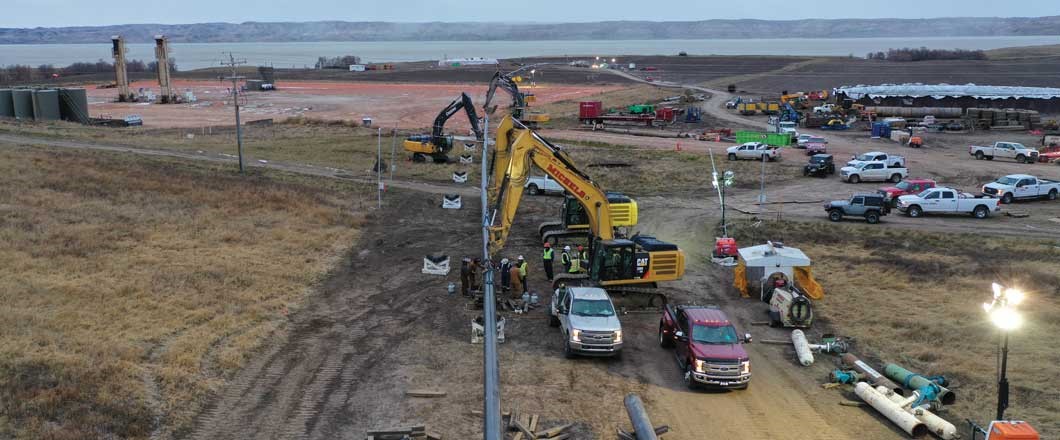
For all of these challenges and accomplishments, the Bakken Missouri River Crossing was selected the 2020 Trenchless Technology Project of the Year for New Installation.
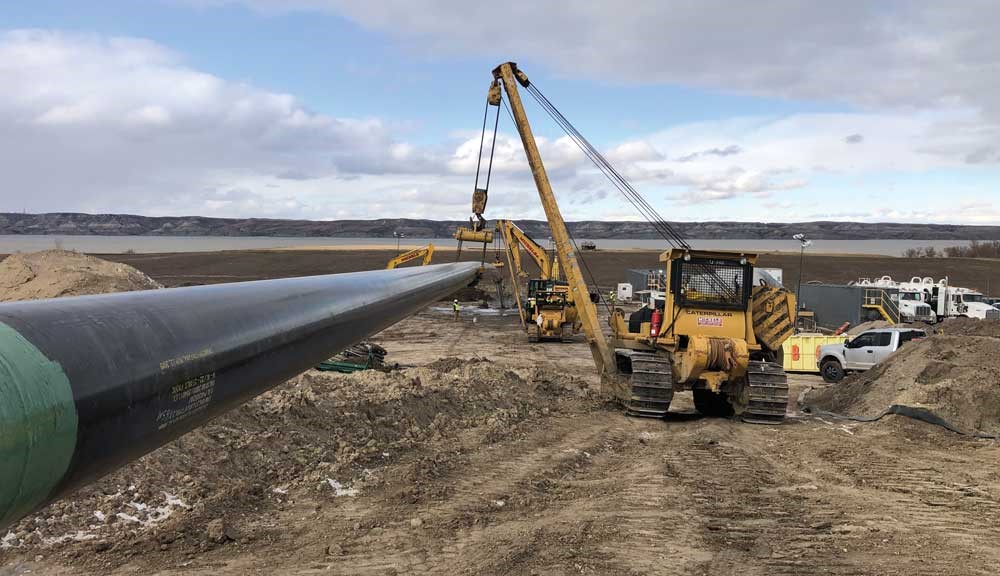
Crews prepared to drill through compacted clay, sand, rock and coal seams. Guided by gyroscopic tracking and downhole tools, the two pilot holes met almost exactly in the middle.
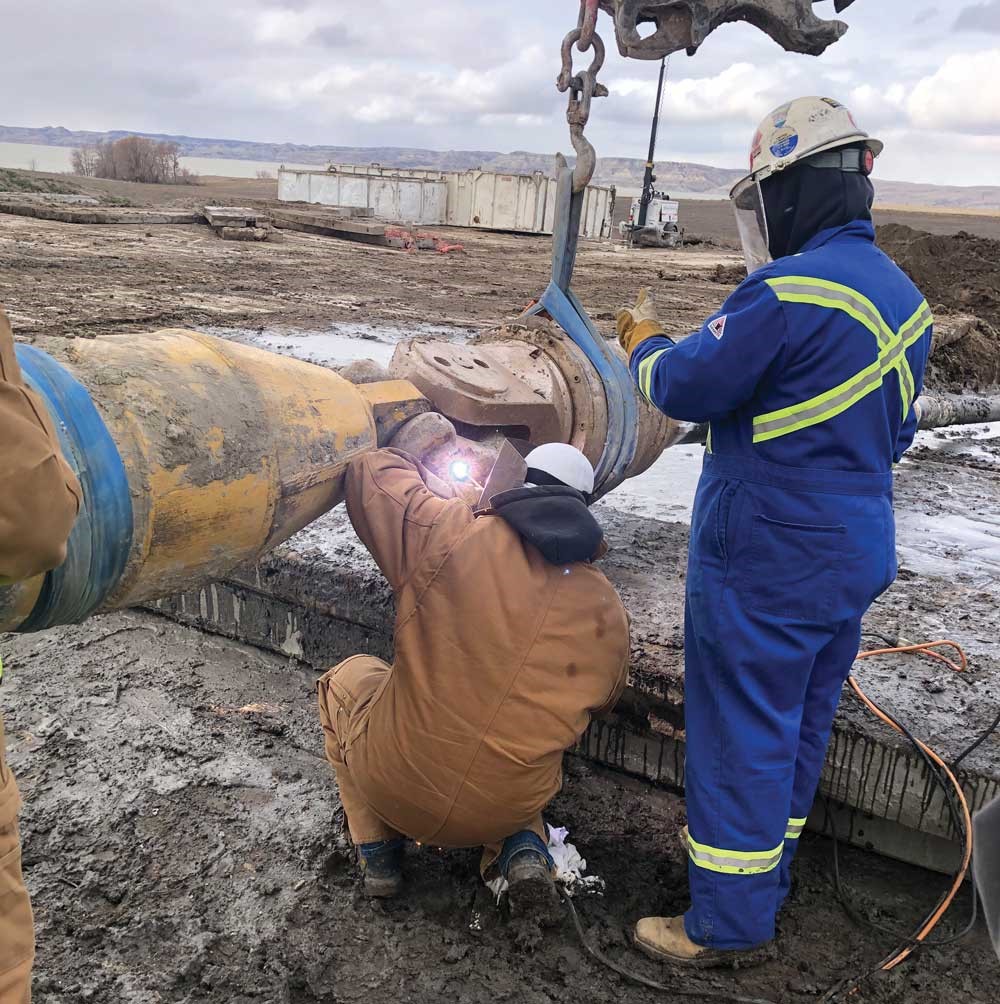
A rig with 1.8-million lb push/pull capacity was positioned on the south side of the lake (entry side) and a rig with 1.2-million lb push/pull capacity on the north side. The 20-in. pipe string laydown area was 75 ft wide by 6,000 ft long, looking like a snake trail due to the vast undulating landscape.
Elevation changes were 10 to 30 ft. The pullback started with an 1,100-ft section was followed by two sections of about one mile each; after each section, the pullback was stopped to perform the tie-in welds, X-ray and coating operation, adding to the additional risk associated with pulling back this diameter and length of pipe.

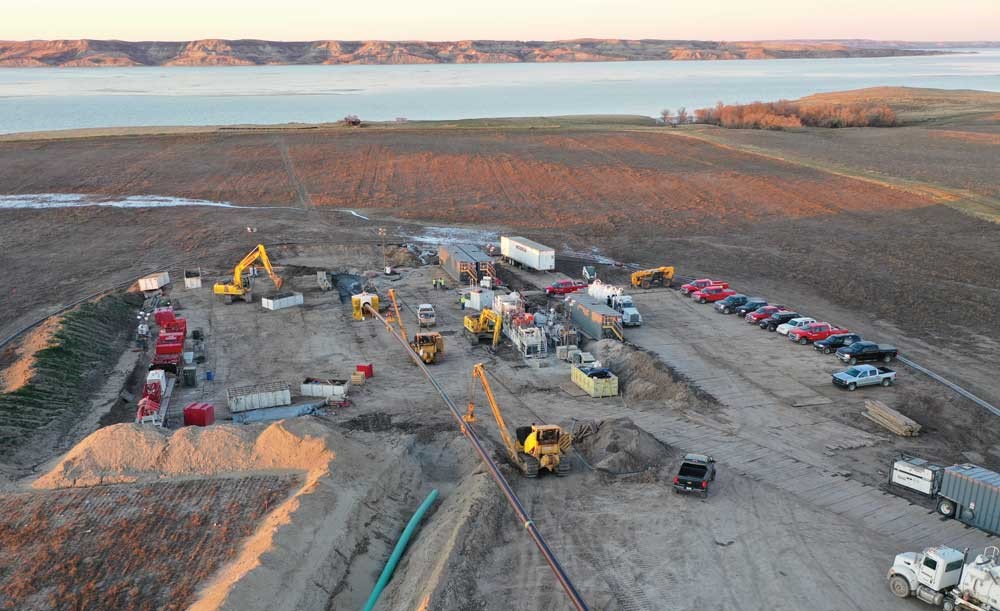
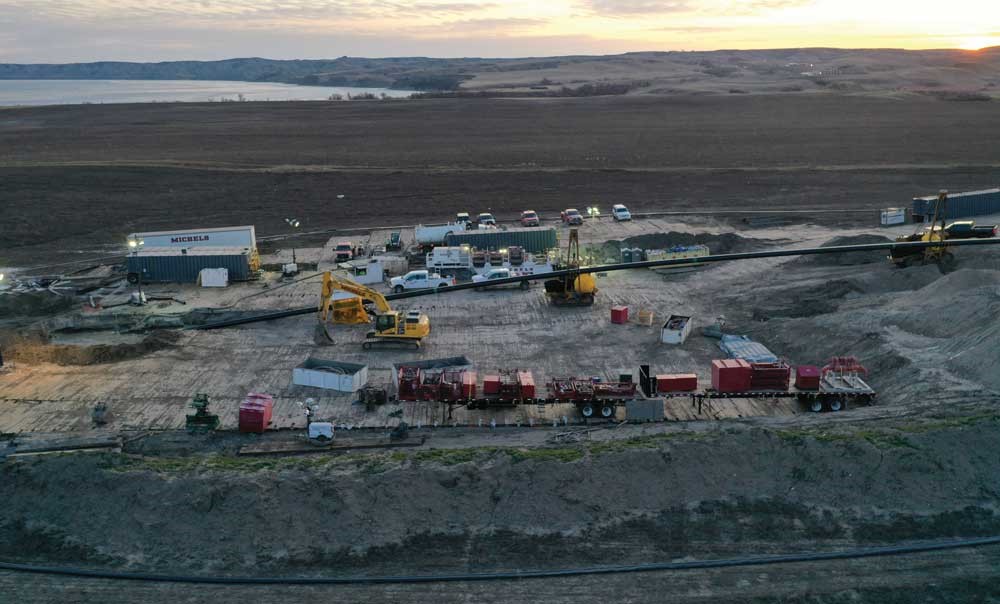
The crossing was performed in late August/early September 2019 to meet an environmental permit requirement banning activity taking place during the Dakota butterfly flight season. This pushed the schedule up against a tight window for completing it prior to the bitter cold winter months, which could wreak havoc on water-based drilling operations and pipeline testing procedures prior to pullback. Final pullback was completed in October 2019, during a minor snowstorm with frigid temperatures.
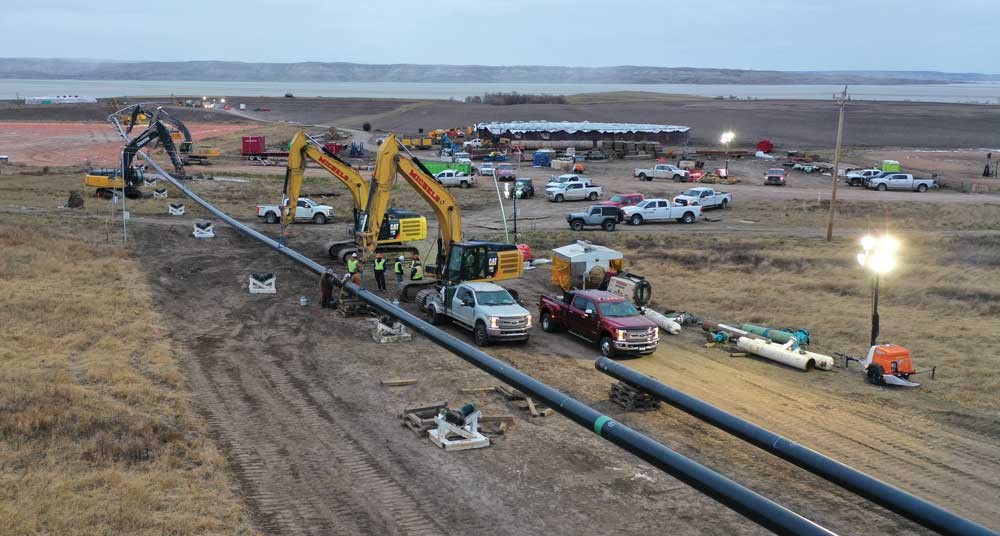
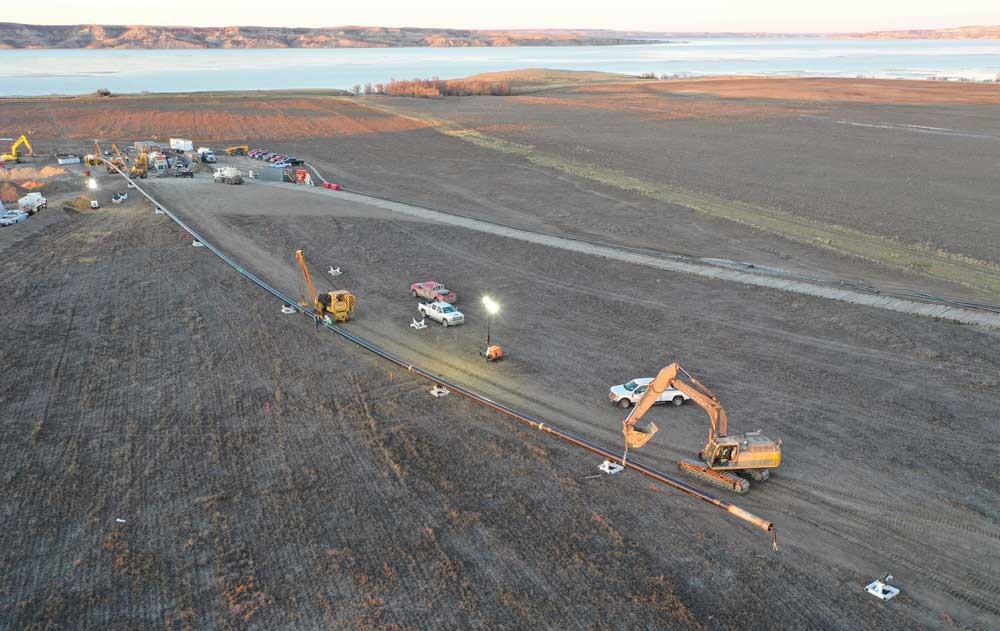
Michels’ specialized tooling and expertise in mud management planning allowed drilling fluid pressures to be maintained, resulting in the project being completed without any unplanned release of fluid.
Mueller marvels at how far the HDD industry has traveled since his introduction to it in 1989, when he started out doing 500-ft crossings with zero surface guidance. “We preform many significant projects every year,” he says. “We always want to push that envelope. That is the direction this market is going. There are large obstacles in the world that need to get crossed. If you can get an engineer to design these projects and can get a contractor that is willing to take the risk to perform it, it opens the world to a lot of future projects that two or three years ago would have been unachievable.”
Regulatory entities (including the U.S. Army Corps of Engineers) are placing more emphasis on proper HDD design including documentation to demonstrate that inadvertent return risks can be managed to avoid unwanted environmental issues associated with the loss of drilling fluids from an HDD bore during drilling operations.
Kinder Morgan retained the services of Mott MacDonald to perform a detailed design of the proposed HDD installation and provide recommendations for enhancing the success of the crossing. As part of this design work, Mott MacDonald performed a series of hydrofracture evaluations based on the anticipated geotechnical materials, site topography, and pilot bore drilling parameters. These evaluations helped to identify the required installation depth necessary to meet the requirements set forth by the USACE and establish the required drill and intersect zone for the installation. Mott MacDonald summarized their hydrofracture evaluations in a detailed white paper, which was instrumental in securing the USACE permit for this crossing.
